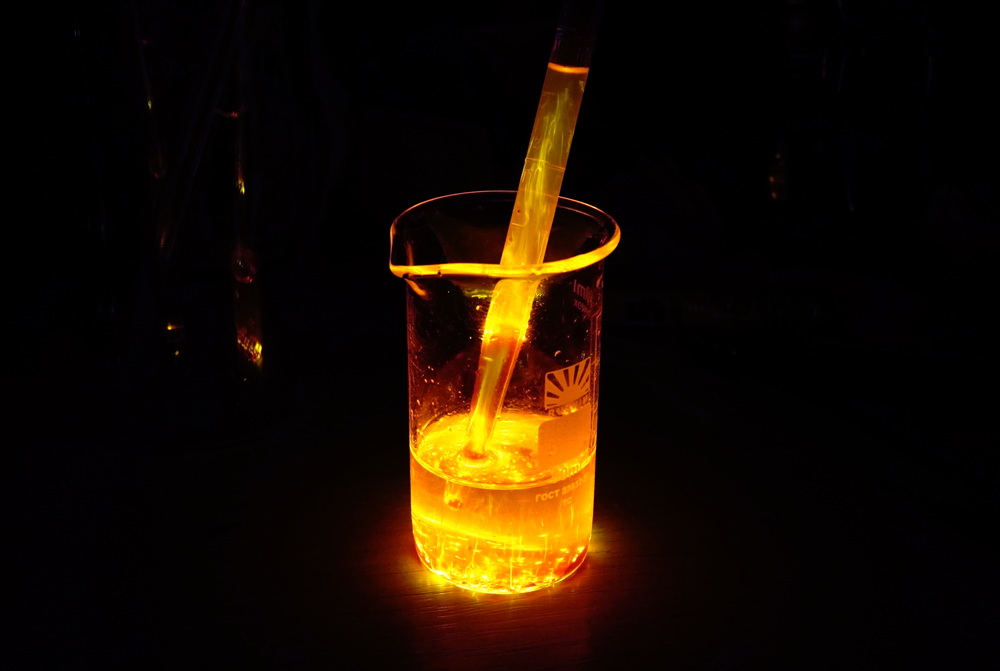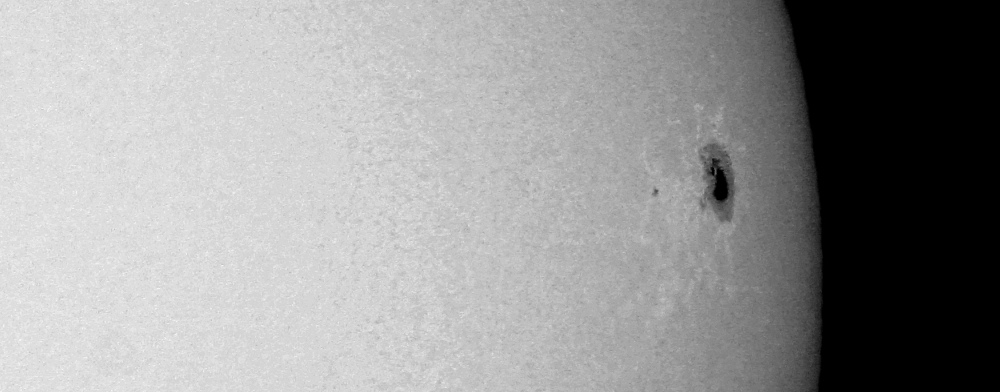Is 16 terabytes Enough For Anyone?
At some point of life everyone starts to feel that 16Tb storage is no longer enough and it's time to expand it. I am a little scared to think how did I managed to currently occupy 12.68Tb. But there is no time to investigate, let's throw some hardware at the problem!After routinely adding yet another 4Tb disk to RAID6 array and trying to resize ext4 partition I was puzzled by the message:
That was totally unexpected. EXT4 does not support partitions larger than 16Tb? It appeared that it did not up until somewhat recent time. 5 years ago that would have been a brick wall, 2 years ago I would have to wrestle a little with bleeding edge resize2fs/kernel and now it all works on-the-fly out of the box. One just need to convert this ext4 partition to 64-bit format:root@lbox2:/var$ resize2fs /dev/md1 resize2fs 1.43.4 (31-Jan-2017) resize2fs: New size too large to be expressed in 32 bits
root@lbox2:/var$ resize2fs -b /dev/md1 resize2fs 1.43.4 (31-Jan-2017) Converting the filesystem to 64-bit. The filesystem on /dev/md1 is now 3907015424 (4k) blocks long. root@lbox2:/var$ resize2fs /dev/md1 resize2fs 1.43.4 (31-Jan-2017) Resizing the filesystem on /dev/md1 to 4883769280 (4k) blocks. The filesystem on /dev/md1 is now 4883769280 (4k) blocks long. root@lbox2:/var$ mount /var/bigfatdisk root@lbox2:/var/bigfatdisk$ df . -H Filesystem Size Used Avail Use% Mounted on /dev/md1 20T 14T 5.9T 71% /var/bigfatdisk xy@lbox2:~$ cat /proc/mdstat Personalities : [raid6] [raid5] [raid4] md1 : active raid6 sdf1[0] sdg1[7] sdh1[6] sdc1[5] sdb1[3] sde1[2] sda1[1] 19535077120 blocks super 1.2 level 6, 128k chunk, algorithm 2 [7/7] [UUUUUUU] bitmap: 1/466 pages [4KB], 4096KB chunk, file: /var/md1_intent.bin unused devices: <none>

I remember in the late 90's i've been to ftp.cdrom.com - it had enormous 0.5Tb array: it felt like absolutely insane volume of data (I had 850Mb HDD at the time). Probably readers of this article in 2037 would have 1024-layer 3D phase-change memory with 64Tb in 2.5" drive. Good for you, readers from the future... Although it is also possible that popularization of online-content, streaming and cloud apps will make it almost obsolete to have large local storage (with a few exceptions).
BTW since I went for softraid at home about 8 years ago - I had not a single HDD failure (about 50 hdd-years). Still pays off - much less worries about at least 1 thing...
More Deep Space
Finished processing photos from my last trip so we all can see the results.Let's start from Milky Way near M6, M7 (exposure 85x3.2s):

Deeper look at the center of our galaxy
This is my first experience in deep sky photography. Best place to start is center of our galaxy - where deep sky objects are densely packed.128 shots @3.2 seconds exposure each. Sony NEX-5 with Canon FD 55mm F1.2@2.2. All frames were stacked using DeepSkyStacker, plate solving and annotation is done by All Sky Plate Solver. There were 2 shooting sessions for this subject - both at Tenerife mountains, at heights 1500 and 2200 meters. Sky glow was twice brighter at 1500m, so this batch of 106 shots was not used in final stacking. Even at 2200m conditions were far from perfect - wind from Africa carried visible dust which contributed to background brightness.
Next time camera with more modern sensor will help as well as less-bright (!!) lens: F1.2 was making bright stars too large even when stopped down to F2.2. And surely, sky tracking mount will allow much longer exposures and higher image SNR.
On mouse over - annotation. Higher resolution on click.

Chemiluminescence of CPPO with organic dyes

 Finally it worked! It is much more complicated than Luminol reaction. The hardest logistical part was finding CPPO (Bis-[2,4,5-trichloro-6-(pentyloxycarbonyl)phenyl]oxalate). Dyes are Fluorescein and Rhodamine R/6G. Catalyst/acidity regulator is Sodium Acetate (more common bases like NaOH or NaHCO3 were not working). It's conventional synthesis from baking soda and acetic acid is messy and painfully slow - next time going to try synthesis from sodium hydroxide. Sodium acetate is actually a pretty interesting chemical as itself due to interesting phase transitions of it's hydrate - some day I will have some fun with it.
Finally it worked! It is much more complicated than Luminol reaction. The hardest logistical part was finding CPPO (Bis-[2,4,5-trichloro-6-(pentyloxycarbonyl)phenyl]oxalate). Dyes are Fluorescein and Rhodamine R/6G. Catalyst/acidity regulator is Sodium Acetate (more common bases like NaOH or NaHCO3 were not working). It's conventional synthesis from baking soda and acetic acid is messy and painfully slow - next time going to try synthesis from sodium hydroxide. Sodium acetate is actually a pretty interesting chemical as itself due to interesting phase transitions of it's hydrate - some day I will have some fun with it.Picking solvent for reaction is another story: components are almost insoluble in water so we have to use some organic solvent. In DMSO (which worked nicely with Luminol) there was some aggressive side reaction. Ethyl acetate has extremely bad smell and is quite unsafe. One of the best and final picks was dibutyl phthalate.
This is not the end of my experiments with CPPO, I still have 99.5g left

Daylight astronomy - Venus
It is believed that city glow at night is a no-go for astronomy. But what about daylight?
I've managed to observe and photograph Venus at noon, when sun was at it's brightest. Without any reference points in the sky and without motorized mount - it's a challenge to spot Venus at daylight. In my binoculars (11x70, with ~4.5° FOV) it was taking couple of minutes using Stellarium and ground reference points.

After that - few more minutes to spot it using main telescope. Venus is no longer a thin sickle - after 3 months Venus and Earth have gone quite far apart on their orbits around the sun:

What's next? Mercury? That's gonna be slightly dangerous... :-)
Sun and AZ5
Finally my telescope is on a stable mount - TS AZ5:
Farewell photo of sun spot #2665 in Hβ (486.1nm). Solar minimum is almost there so we are not going to see lots of sunspots during the nearest years.

Fuming nitric acid synthesis
It is not that easy to buy 100% nitric acid due to it's instability (and hence special requirements for transportation) and wide range of it's applications. Distillation does not allow one to get above 68%. If we cannot live without 100% - we'll have to synthesize it ourselves. Last time I did that using quite inconvenient and unsafe method (decomposition of lead(II) nitrate, then dissolving mix of liquid nitrous oxides in 68% nitric acid. This process was too scary to describe in detail
This time I went for conventional and relatively safer route: potassium nitrate (100g) + 98% sulfuric acid (125ml, ~50% excess). You can then distill nearly 100% pure nitric acid.
Final result was reached much easier and faster. Yield was 50ml (which is ~50%, had no more time and ice to continue the process). Next time I will ether have to try something more high-tech (like Peltier cooling with Liebig condenser - Graham's condenser seems to be an overkill and strictly speaking you cannot use it at this angle), or run the process at winter (but it's probably not a good idea to store >100ml of 100% nitric acid due to it's instability).
I've tried a bit of final product right away by etching Texas Instruments IC with very chemically durable plastic.

First light of Skywatcher 120ED refractor telescope - Moon and Saturn
Just received my new telescope - Skywatcher 120ED. With my old 10" dobsonian it was almost pointless to observe from the balcony - air turbulence was extremely severe and leaving no chances to catch even single clean frame. That's another reminder than bigger is not always better.







 @BarsMonster
@BarsMonster